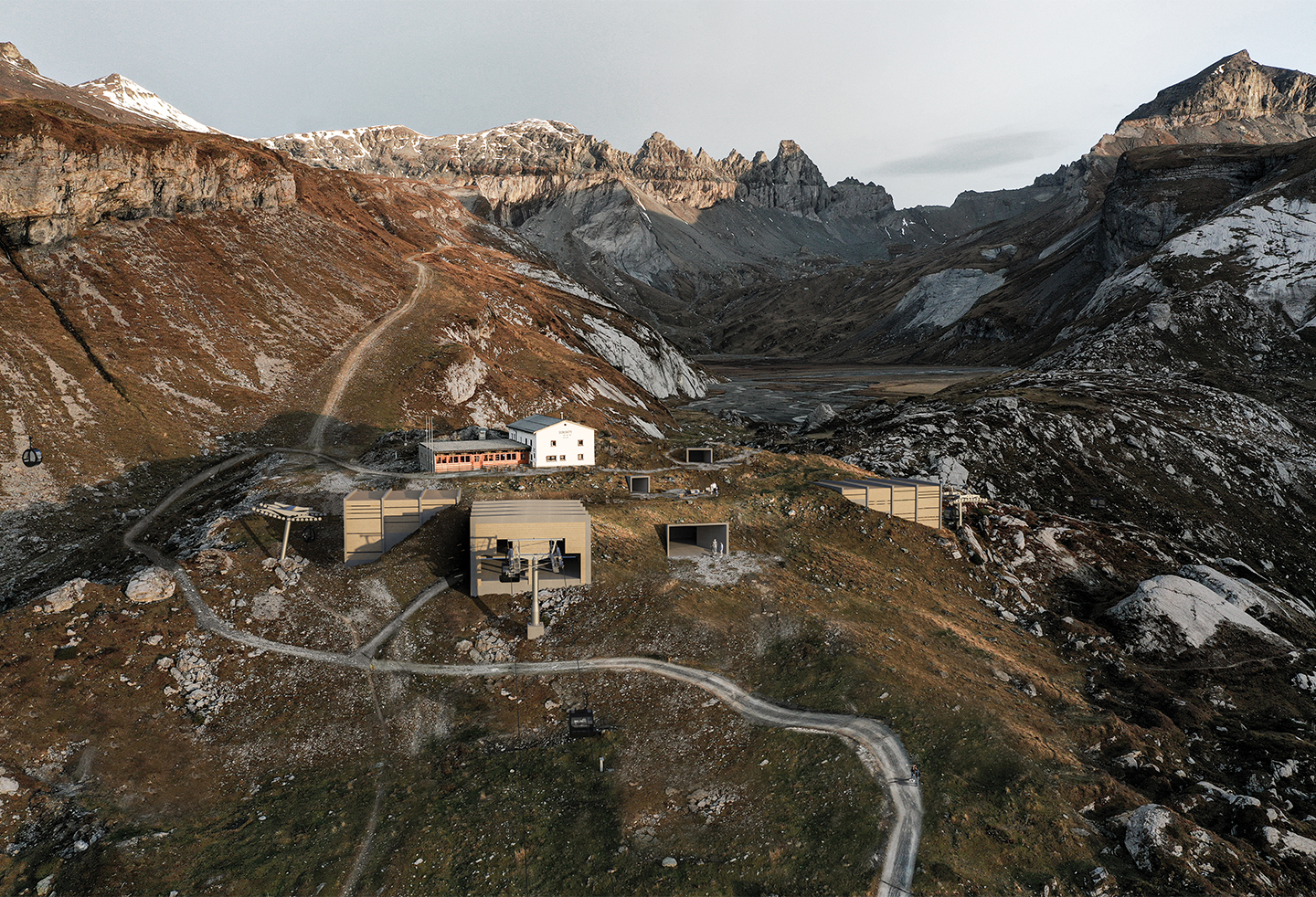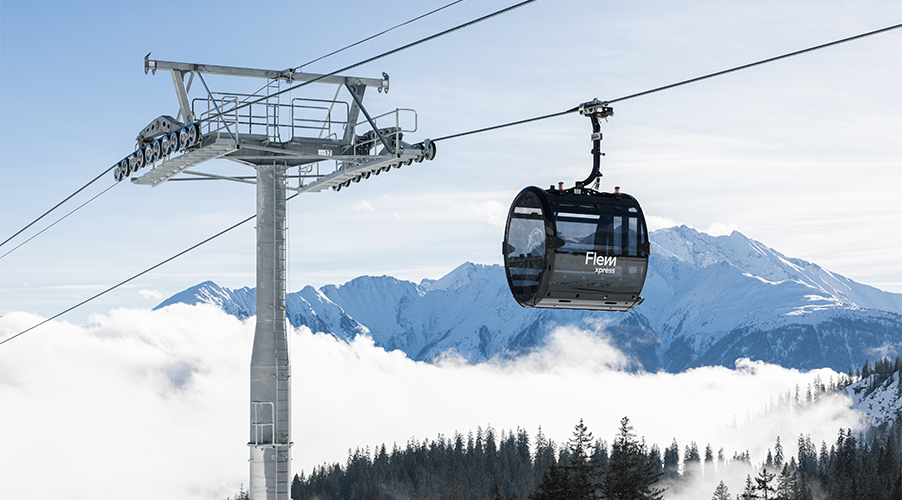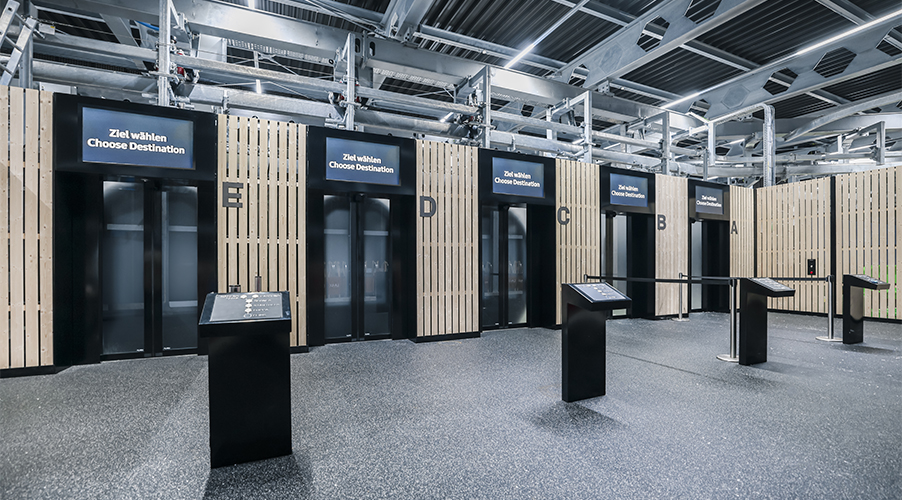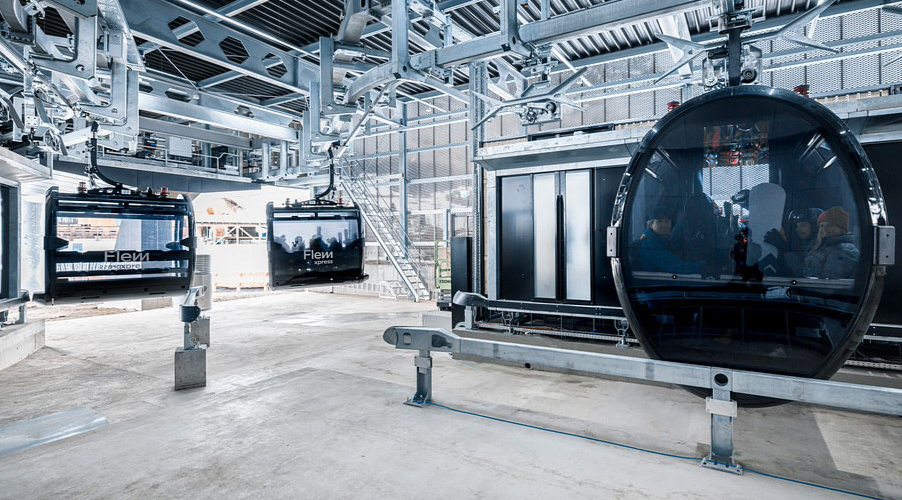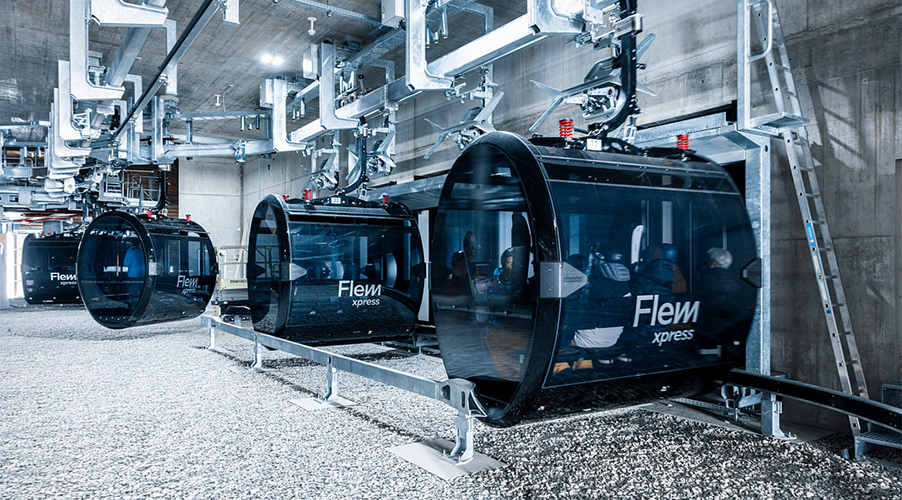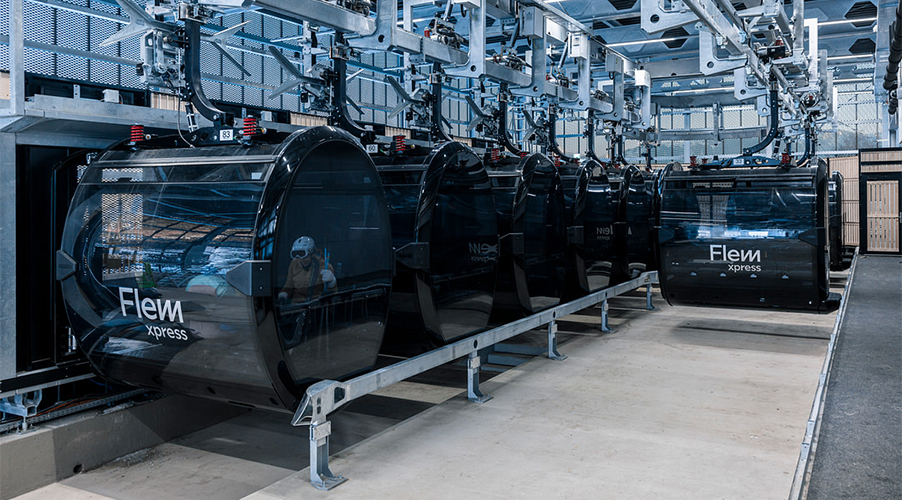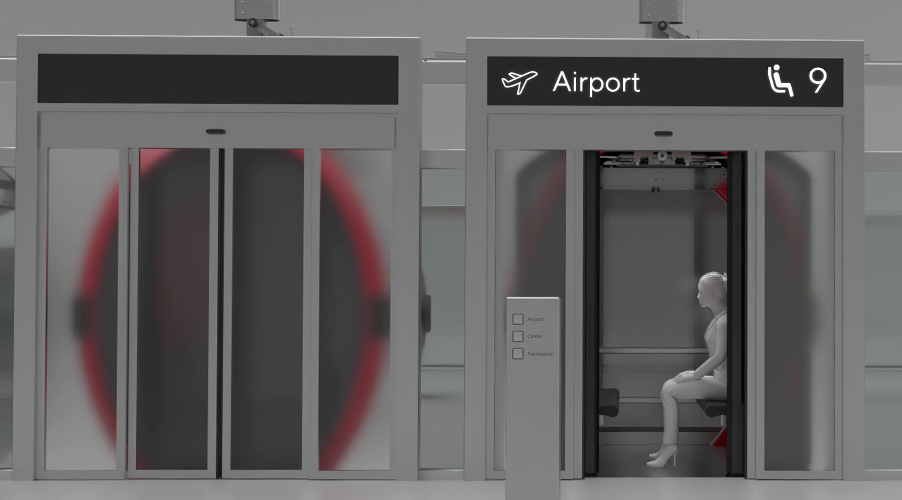
What sets us apart
Ropetaxi®
An Innovation in Ropeway Technology
The development of Ropetaxi introduces new flexibility and delivers greater autonomy, efficiency, sustainability, and comfort. It is a specialized version of a detachable monocable gondola lift, based on proven ropeway technology – enhanced with numerous new possibilities while maintaining the highest safety standards.
Autonomous Operation and Flexible Routing
The proprietary eMotion drive integrated into the grip enables autonomous cabin movement within stations.
-
Direct travel without transfers: Passengers select their destination at the push of a button.
-
Barrier-free access: Boarding and alighting always occur at a standstill – ideal for strollers, luggage, and passengers with limited mobility.
-
Efficiency: Empty runs are significantly reduced since cabins only move when passengers board. The system can transport up to 1200 passengers per hour, using either 8- or 10-seat cabins.
New Drive Technology – eMotion
-
Transport along the line remains on the rope, with acceleration and deceleration handled by tire conveyors.
-
All other tire conveyors are eliminated → quieter operation, fewer components, and reduced maintenance.
-
Cabins move through stations at 1 m/s exclusively via the eMotion drive.
-
Two motors on the grip plus two batteries per cabin enable autonomous operation for up to one hour.
-
Battery Management System (BMS): monitors current and voltage for optimal performance.
-
Energy is recovered and stored during braking and acceleration.
-
Quick-change battery system available.
-
Full redundancy of the eMotion system ensures maximum availability and safety.
Smart Control – Intelligent System Management
The process control system coordinates all movements:
-
Passenger flow management: Access displays guide passengers to the correct cabin.
-
Automatic departure: Adjusted to the number of passengers boarding.
-
Fast-switching track switches: Enable direct travel without transfers.
-
Distance sensors: Precisely detect cabins for accurate spacing.
-
Evacuation system: Quickly removes cabins from the station loop in emergencies.
Cabin and Comfort
-
Separate boarding areas for stress-free access.
-
Fully barrier-free – for the first time, truly accessible for visually and mobility-impaired passengers.
-
Customizable cabin interiors.
-
Tracking allows personalized use or a «Fast Line» option.
Garage and Efficiency
-
No separate garage infrastructure required.
-
Cabins are lined up within the station – eliminating daily storage and retrieval.
-
The entire system can be shut down once no cabins remain on the rope.
-
Environmentally friendly: fewer empty runs, reduced wear, and lower rope speed during idle periods.
